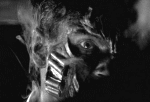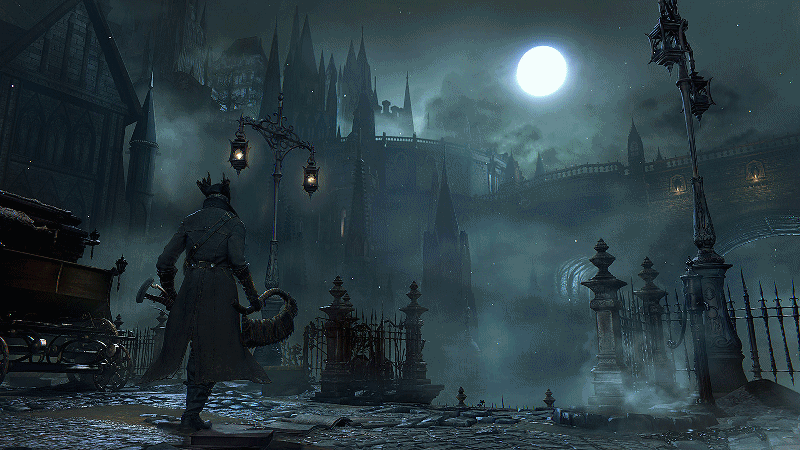I’ve been sleeping 3/5 hours a day this week and yesterday I decided to reply on a forum to explain my interpretation of how the magic system in the Malazan world works, especially because it’s one of those aspects where my own frame of mind seems completely different from that of the average reader. And yet I’m not merely speculating because everything I say I see it grounded in those pages. I’ve only dug it out and made it more explicit. And no, making the Malazan magic system explicit doesn’t remove the beauty and mystery as it usually happens when you over analyze these things. It flourishes.
So, two things for me to notice. The first is that somehow the more I’m exhausted the more my brain seems to kick into higher gear. The second is that I wrote this mostly to pin down my own idea for myself and I didn’t expect anyone even to read it, especially on a forum that seems antagonistic to everything I write (my fault), instead I was surprised to see that my enthusiasm for this thing managed to cross over to some other users. Maybe to see the Malazan series in a slightly different light.
I have some comments to write even about the first page(s) of Fall of Light, because it’s another case where what I read in those lines is something that no one seems to have picked up. And yet that one is very obvious…
—
I would have said the reverse – that Warrens are a clunky DnD type magic system, and that Erikson is too obsessed with the minutiae of how it works to give any meaning to it – worsened by the fact that his explanations are pure gibberish.
The magic system in Malazan is anti-mechanical. It’s strictly the opposite of science. You won’t grasp it if you parse it in a traditional way like a system of fixed rules in a roleplaying game. To explain the core of it I’d have to talk about philosophical concepts like “dualism” and an anthropocentric conception of reality.
The thing is: Malazan “spawns” from Donaldson’s Thomas Covenant (it’s not inspired by it, being completely different, but it’s conceptually hanging from the same branch of the same tree). Thomas Covenant is like a pre-modern version of fantasy, coming from a certain romantic tradition. That means, in the fewest words possible: the fantasy world doesn’t *exist* as external, objective reality as we assume our own world, but it’s just a “projection” of an internal mental or soul state. A mental “landscape” that turns concrete. Tangible objects and creatures you see are not simply tangible objects, but symbols. As it happens within a dream. The fantasy world is essentially like The Matrix, an artificial construction that closes around you. The writer consciously traps himself within this system he himself created, then “seals” the dome with some horizon occlusion.
Malazan moves from there, if you frame it as post-modern. It has a metalinguistic frame, observing the observation. Observing the world as an artificial creation. It’s like Covenant’s world, but moved on, looking at that world not from the inside (as Covenant, trapped within) but from the outside, like a writer, writing, observing himself writing. The main plot is hidden, because it’s a “shadow” of the text. A lot of this is even amusing wordplay, just for “fun” (see Shadowthrone and Pust, or even Lady Envy, or Kruppe a little bit, being conscious of the “meta” and rolling with it, hovering just a tiny bit above rules without completely breaking them). The magic in Malazan doesn’t make sense traditionally because it’s not a traditional mechanic. It’s not “rules of physics with a fantasy bent”. Magic in Malazan is pure meaning. Wherever meaning coalesces, magic becomes real and tangible instead of just an abstraction. Even the sedimentation of a strong emotion of a small community can potentially give birth to a small god (like the Cthulhu thing in book 5). The same as in reality we are driven by powerful symbols and meanings, that give us identity and drive. That construct our lives, creating differentiations as a linguistic system (see constructivism or even some Wittgenstein). Malazan takes this concept and makes it into something tangible instead of purely conceptual.
So, the important aspect to understand magic in Malazan is to observe how it transformed and evolved in the world. You notice how there are “old” gods and new gods. And you notice how the old gods have proprieties that are simply deduced from the societies that produced those gods. Very simple example: if the populations were sedentary or migratory. Essentially: all the gods in Malazan “behave” functionally as real gods in our own world. They are projections of cultural “meaning”. And that’s what you observe in the evolution of society within the Malazan world, the more it becomes “civilized” the more the gods become blurred, more subtle, representing more complex concepts. Gods evolve along the society that gave them birth. That, if you want to stay concrete, means that the relationship between gods and worshipers is circular. Belief shapes gods, gods have influence on believers. They use and are being used (see what Heboric does to Fener). It’s always a system of meaning, and it again comes from a fantasy world that is built as an anthropomorphic creation. A body, that Erikson SHOVES in your face when he tells you magic begins with Krul, who’s a god, who created magic with his own body. Or even with Erikson’s version of “gaia” the earth: Burn. Or the Mhybe, that is the MOST important thing within all Malazan. A woman who becomes a world. It’s only through a body that meaning can be created (witness!). Krul creates differentiations within his body, going from chaos to law. To rules. To systems (or same as the Crippled God has to enter the Deck of Dragons system in order to “play” the game, where “playing the game” is yet another metalinguistic pun, since we’re talking of a card game based on tarots). Exactly like a cultural system, or the evolution of civilization. So, as in Thomas Covenant the “fantasy world” is a body. An anthropomorphic creation. A filter, a lens you use to observe human life, through human life, through the act of writing (and act of reading as a surrogate of it, or, like, parasitic, or like a bird perched on Erikson’s shoulder observing what he’s doing with the hope of understanding some of it).
Like a linguistic system the Malazan magic has a diachronic dimension that is even more important than synchronic aspects: it’s ever-evolving.
That again means this fantasy world is built as human-sized (even when it project human fears or human struggles, that look inhuman, it’s always circular. Same as even the most inhuman species are still kind of human representations anyway). Whereas our own would is (supposedly) built on science. Rules, math. Stuff that is alien to a human dimension, that you can only try to grasp, but that is qualitatively different. (see Heboric flying with the Jade statues in book 4, those statues represent something closer to our world) Something that David Foster Wallace also writes about and defines: “the widening gap between knowledge and experience”.
Or: post-modernity. Trying to come to terms with a world that makes no “sense” anymore.
Bakker writes the same stuff, but from a different angle. So it’s like if it’s complementary and opposite to Malazan.
This is the stuff I like. If you know more of this kind I’d love to hear about it. Sadly I really haven’t found anything that comes close… (well, Evangelion, Donnie Darko, Upstream Color, Battlestar Galactica and LOST, these do certain things on the same line with their mythology, but none do it as well and, MOST OF ALL: *coherently* as Malazan)


